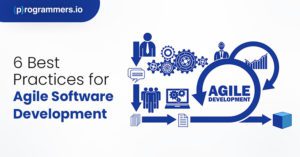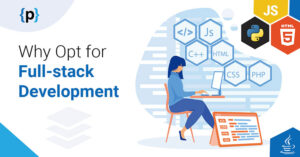All About Cloud Software Development
In a very short period of time, cloud computing has shifted from being a buzzword in the world of information technology to becoming the most robust vector in the IT domain today. Cloud software development offers immense potential for companies today, regardless of the industry that they operate in.
We have already discussed about the checklist required in cloud development. In this article, we take a closer look at cloud software development and run you through everything you need to know about it. Stay with us as we take an elaborate look.
What Is Cloud Computing?
The term cloud computing refers to a variety of services and offerings that are delivered to consumers through the internet by cloud service providers. Cloud-based systems usually refer to all computing resources, including servers, networks and storage tools that are used to provide ready-made solutions on demand to consumers.
Cloud software development is cloud-based and hence means that developers don’t have to build and maintain a separate physical infrastructure for their developed software operations. Programmers can build and manage their software operations without the need for servers or data or without installing high performance software tools for operations. Instead, all of this is effectively managed through the computing power and services delivered by cloud service providers.
Cloud Computing History
- The idea of a utility company was introduced in 1961, which served as the essence of the cloud
- The term cloud computing was originally coined in the year 1996
- Salesforce was the first organization in the world to offer applications to run on the internet. They initiated Software as a Service or SaaS protocols in 1999
- Amazon introduced the first Infrastructure as a Service or SaaS platform in 2006, which was named the Elastic Compute Cloud
Fascinating Stats Related to Cloud Computing
- The market for cloud computing is expected to grow from $371.4 billion in the year 2020 to a staggering $832.1 billion in the year 2025
- 89 percent of all companies in a recent survey said they use the cloud in some capacity
- The United States spent the most on the cloud with over $120 billion spent during the fiscal year of 2019
- Amazon Web Services or AWS is the top-most cloud service provider with a market share of 33 percent
Cloud Computing Features
The cloud operates with a number of distinct features, which are summarized below:
- Cloud solution servers are located within remote data centers
- A pay-as-you-go model is used for cloud providers when it comes to pricing
- The provider takes over the responsibility of cloud infrastructure management and takes it away from the user
- Users can access their cloud service from any device, any location and at any given time
- The cloud can comprehensively increase or decrease in scale and magnitude based entirely on the requirements of the end user. This ensures that users can get the form of cloud they best prefer with their usage patterns and requirements in mind
Choosing between On-Premise and Cloud Software Development
Cloud software development has now become a very convenient solution to the traditional approach of on-premise legacy systems. In this section we compare on-premise software development to cloud software development.
- Budget: A higher budget is required for setting up software development infrastructure within your organization. The initial expenses are significantly high as compared to cloud services, which cost relatively less.
- Need for Technical Staff: On-premise solutions require the presence of a dedicated technical team to not only monitor the systems, but also support it where they can. On the flip side, the provider will maintain the technicalities of the cloud solutions in a cloud software development solution.
- Flexibility and Scalability: Perhaps the biggest complication of on-premise solutions is scaling with time. Businesses can often face a number of complications in scaling and growing their on-premise solutions as they grow in size and stature. This process is, however, extremely simple on the cloud as the services provided on the cloud can be increased as you grow with time. You don’t need to buy additional solutions and servers, because your provider does that for you almost immediately, through an updated payment model.
- Level of Control: On-premise solutions give you better control over some of your hardware and storage servers.
Advantages of Cloud Software Development
A number of organizations in the global business world are migrating to the cloud. These migrations are influenced by the following factors:
- Cost-efficiency: Cost-efficiency is by far the most prominent factor influencing the move toward the cloud. Cloud software development costs lower than desktop software. This approach also helps remove licensing fees and expenses on on-premise hardware.
- Extended flexibility: The cloud allows for rapid scaling up and down with time.
- Unlimited Storage: Cloud providers do not limit the storage capacity of a software development company.
- Good Backup: The disaster recovery processes on the cloud are more streamlined and can help with backup and recovery in a more prominent manner.
- Improved Team Collaboration: Cloud services enhance collaboration between users and help facilitate streamlined operations.
Challenges of Cloud Software Development
There are a few challenges involved in the process as well, including:
- Compatibility: Developers cannot migrate all workloads to the cloud due to compatibility issues. The process can hence become extremely difficult.
- Technical Challenges: The cloud is prone to malfunctions and outages and can pose a few technical challenges.
- Security Issues: Companies think twice before handing over extremely sensitive data to a third-party service. This potentially increases the chance of hacker attacks as well.
The world is witnessing a rapid shift from on-premise to cloud software development. Various cloud service platforms that are widely used by the organizations include Azure, AWS and Google cloud. This shift promises great potential for software development where a hybrid model can be used to get the best results possible.
How can we help you?
We have hundreds of highly-qualified, experienced experts working in 70+ technologies.









